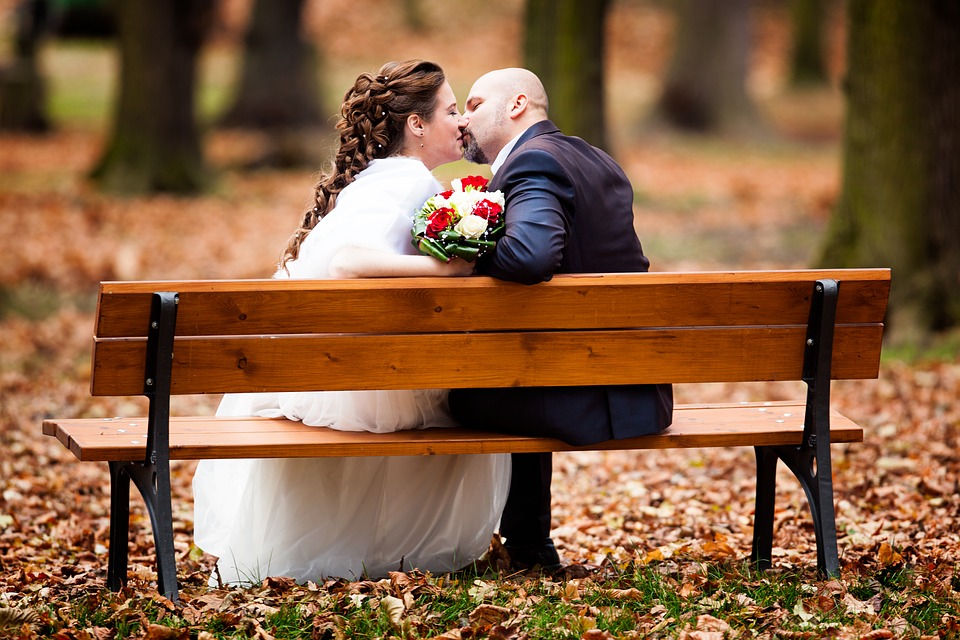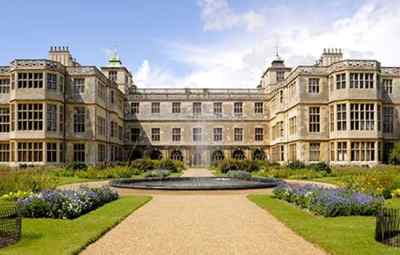Researched by Dominic Farrugia
Essex is often considered a more modern county than its near neighbour Suffolk, with its busy and bustling larger towns such as Chelmsford, Southend and Colchester and proximity to London. Surprisingly enough, it actually boasts more listed buildings than Suffolk and Norfolk – both larger counties.
Amongst the selection of castles, unusual houses and structures of historical importance such as Tilbury Fort and Colchester Castle, are a selection of stately homes that are mostly open to the public.
Where to visit?
Essex has many wonderful stately homes that are open to the public. Essex’s close proximity to London has meant that wealthy businessmen for centuries have invested their money in homes in Essex. Here are some of our favourites. Among the interesting stately homes in Essex, the following offer an interesting day out.
Audley End House and Gardens, Saffron Walden
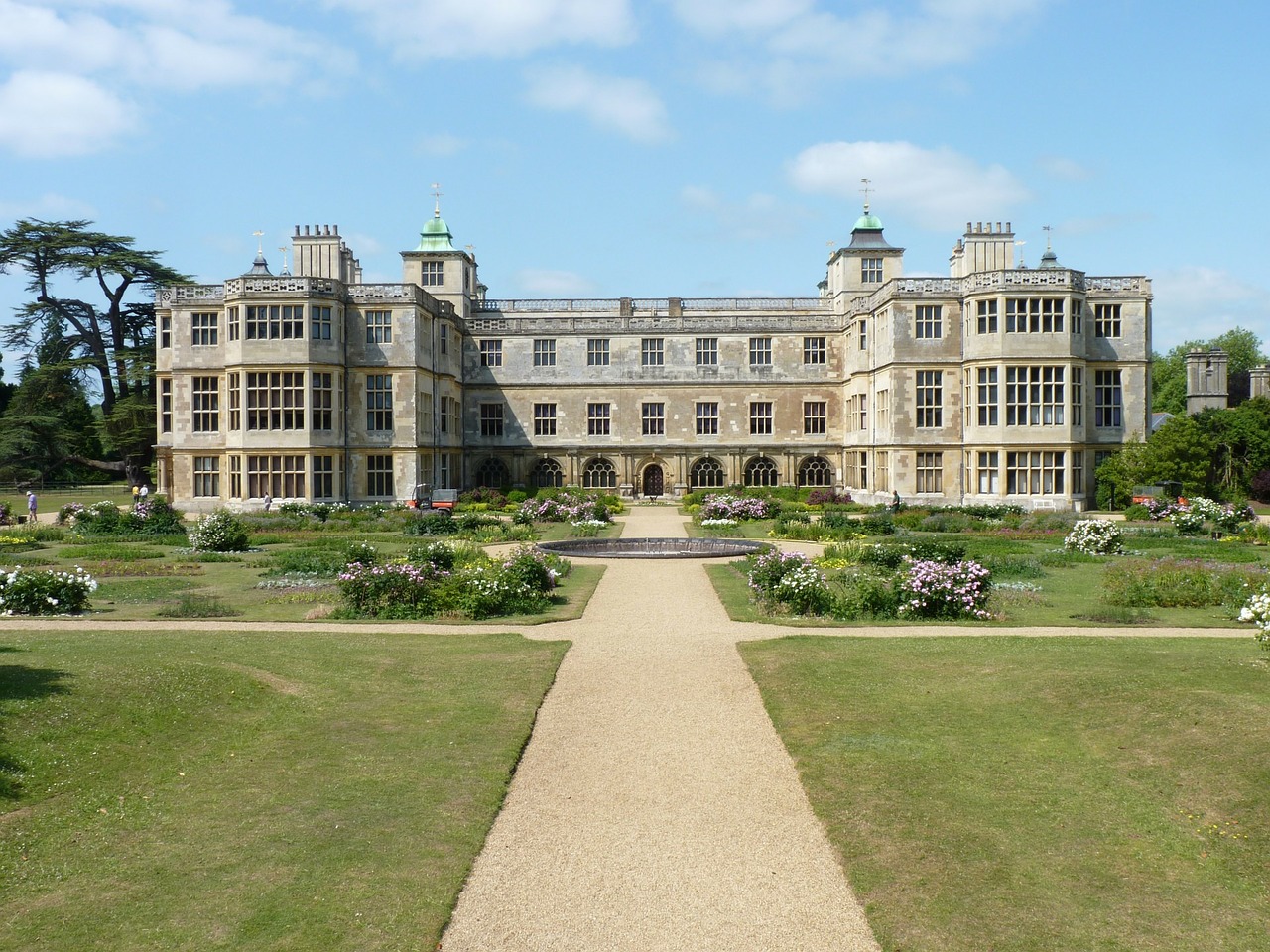 A magnificent Jacobean mansion house, this English Heritage property offers plenty to see and do. These include a ‘Victorian experience’ where this era is brought to life with historical re-enactors taking the role of stable hands, governesses, servants and cooks.
A magnificent Jacobean mansion house, this English Heritage property offers plenty to see and do. These include a ‘Victorian experience’ where this era is brought to life with historical re-enactors taking the role of stable hands, governesses, servants and cooks.
King Henry VIII gave Walden Abbey to Sir Thomas Audley, who transformed it into his mansion, Audley End. Despite ups and downs in its fortunes, Audley End remains one of England’s grandest country homes with over 30 lavishly decorated rooms to enjoy and explore. You can explore the house with its many beautiful interiors which include neo-Classic rooms, a Gothic chapel and rare 18th Century tapestries. There are also outdoor games for families to enjoy.
The Victorian kitchen is well worth a look as is the Adam-designed suite of rooms on the ground floor. On view are spectacular state apartments, an 18th century gothic-style chapel and the contrast of large and tiny rooms such as the great hall and small dressing rooms.
Many of Audley End’s bedroom suites boast splendid decorated Jacobean plaster ceilings. The saloon room features mythical sea creatures and ships in plaster.
Sir John Griffin Griffin’s rooms, which were designed in the mid-1760s, feature the plasterwork of Joseph Rose, one of the leading plaster craftsmen of the day.
- Audley End, Saffron Waden, CB11 4EF.
- Tel: 01799 522842
- Web: english-heritage.org.uk
Hylands House and Estate, Chelmsford
Hylands House is a Grade II listed building, dating back to the 1730’s, was bought by Chelmsford Borough Council in the mid 1960’s. Over the following years a series of restorations took place culminating in the final phase completed in 2005 that restored the 300 year old property to its Victorian splendour. Along the way, restoration work has also revealed the building’s Queen Anne origins.
Inside, along with the spectacular grand staircase is a remarkable gilded Drawing Room and ornate Banqueting Room. Houses such as this really showcase the quality of architectural designers in Essex.
See here for more information and photos.
- Hylands House, Hylands Park, London Road, Chelmsford, Essex, CM2 8WQ
- Tel: 01245 605500
- Web: chelmsford.gov.uk/hylands
- The House is open to the public on Sundays and Mondays throughout the year.
Ingatestone Hall, Ingatestone
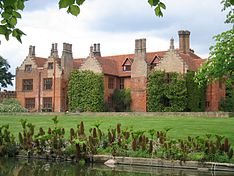
This 16th century manor house stands in ten acres of gardens in open countryside about a mile from Ingatestone and retains much of its original Tudor feel. It was built by Sir William Petre, Secretary of State to four Tudor monarchs, and is occupied by his descendants to this day.
Ingatestone Hall is a real Tudor time warp with its mullioned windows, oak-panelled interiors, high chimneys, two intact priest hiding places, dark rooms and art and furniture collected over the years. See here for more information and photos.
- Ingatestone Hall, Ingatestone, CM4
- Tel: 01277 353 010
- Web: ingatestonehall.com
- Enjoy an afternoon at Ingatestone Hall. Tour the eight principal rooms containing paintings, furniture and memorabilia accumulated over the centuries and wander in the ten acres of gardens.
- The house and grounds are open from 1p.m. to 6p.m. (last entry 5p.m.) on Saturday, Sunday & Bank Holiday Monday afternoons from Easter until the end of September.
Eastbury Manor House, Barking
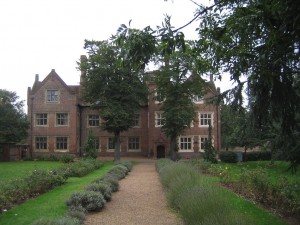
Sited in old Essex, This Elizabethan property originally stood in an isolated, raised position with commanding views over the River Thames and marshland to its south. The exterior retains its original appearance, but aspects of the interior fell into decay before the National Trust purchased it in 1918 saving it from demolition.
Over the years since it has been a local museum and, following a recent refurbishment with money from the Heritage Lottery Fund, provides a local community resource for school visits, evening events and weddings.
Hill Hall, Epping
Although owned by English Heritage, Hill Hall – near Epping – has mainly been converted into private apartments. Part of the interior containing a number of significant Elizabethan paintings is open to the public.
It has had a chequered history over the years having been a prisoner of war camp during World War 2 and a women’s prison. See here for more details and some photos.
Copped Hall, Epping
A fine Georgian mansion currently being restored, Copped Hall has been saved from the clutches of developers by a successful preservation campaign fought by local conservation societies. With its location close to the M25 motorway (the house is visible from the carriageway) and London, developers were showing a big interest.
The origins of Copped Hall can be traced back to the 12th century, although the present mansion was built in the period 1752-58. It’s been altered and added to through the years since, none more so than in the Victorian era when Ernest Wythes, who inherited two huge fortunes, replaced an entire wing amongst other major alterations.
Copped Hall was home to the The High Sheriff of Essex, Sir Thomas Webster, 1st Baronet of Copped Hall, in 1703.
Since a fire in 1917 the house has been unoccupied and fallen into disrepair, and much of the interior fittings including entire staircases were stripped away when the property and estate was sold off in 1952. The basic shell of the property has stayed in reasonably good condition, and the Copped Hall Trust have pledged to restore the property to its 1750’s form. The mansion, along with the gardens, can be visited.
Layer Marney Tower, near Colchester

Built around 1520, Layer Marney Tower is a spectacular 80 feet high Tudor gatehouse around 6 miles south of Colchester. Its grounds and large rooms with vaulted ceilings and exposed brickwork are primarily used as a conference centre and wedding venue, and hosts various events such as open air theatre and classic car shows along with Tudor reenactments for educational and entertainment purposes.
The buildings and grounds are open to the general public, and it’s possible to climb the 99 steps of the tower. You can also have a guided tour of the adjoining house by prior arrangement. Find out more.
Spains Hall, Finchingfield
Dating to around 1570, this grade 1 listed building is primarily used for weddings, parties, corporate events and is also open to the public. The house is still inhabited by the descendants of the local clothier who bought it in 1760.
Part of the structure dates back to the Victorian era such as the coach house and stables.
Porters Civic House and Mayor’s Parlour, Southend-on-Sea
Opinion is divided as to when this house was actually built and – later – when and if renovated. It’s probably 15th or 16th century, although its general layout suggests possible medieval origins. Some of the style of the windows, fireplaces and interior panelling suggests construction between the 1470’s and 1506 whereas other features suggest a second half of the 16th century build.
Some historians think it may be that there was simply a long gap between building phases, others think that local craftsmen simply ‘hung on’ to techniques from the former period. Porters has never been significantly altered since its completion, and has always stayed in use as a private residence.
Plenty to see
Just visiting Essex stately homes provides a varied mixture of styles and interest, and that’s before you start investigating the county’s castles, forts and other buildings of historical interest.
Dominic Farrugia is the co-director of Regency Plaster, plaster restoration specialists since 1988.


